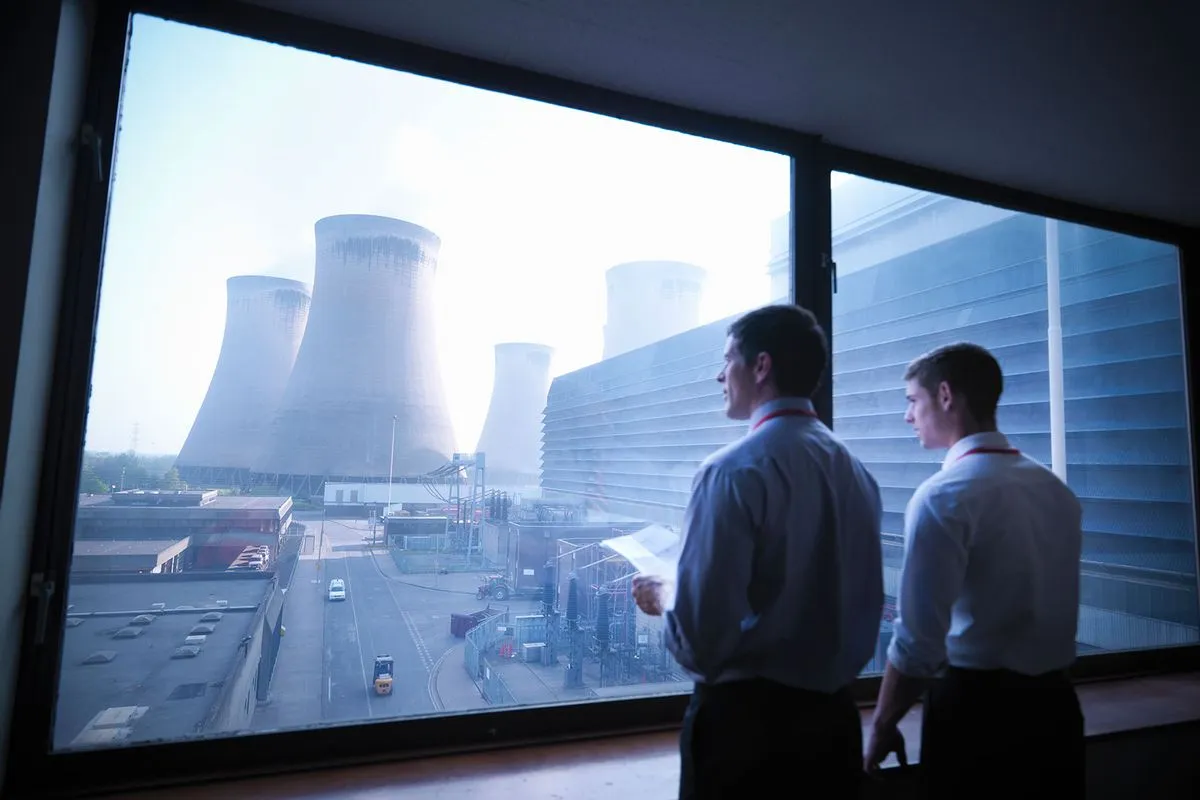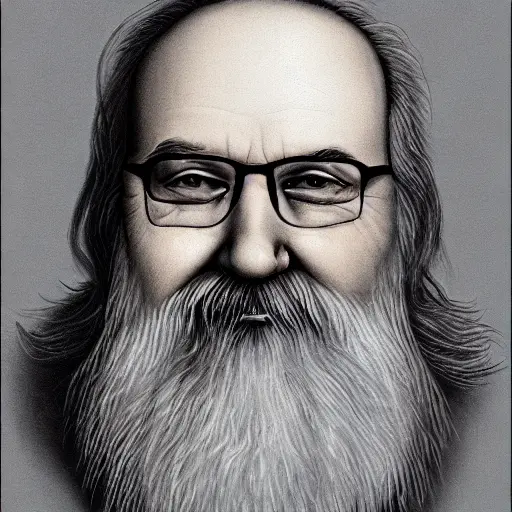The experts are right; there are real and serious risks with nuclear energy. However, there’s one huge benefit: you can increase power generation on-demand. If it’s calm and overcast, you make not be able to generate significant power from wind or solar, and nuclear can fill that gap. On days where you can generate a lot of power from solar or wind, you can decrease the amount of power that a nuke plant is generating.
I think that we’re going to need more nuclear, even as we build more and more renewables.
No you can not do that, you cant just turn up or down the power output of a nuclear Reactor. You need renewables and various ways to store energy short and long therm. Nuclear power plants have a constant power output, it can be increased or decreased but that needs time, to long to keep the grid running normal.
A response time of several minutes for grid balancing is on par with large scale hydropower, and often quicker than combined cycle plants. The whole reason why we put all our major power plants together into an electrical grid is to cause any change in demand or supply to take a lot of time to have an impact.
Nuclear can generate in the evening during peak demand and at night without needing enough batteries to last supply the entire grid for 12 to 18 hours and unlike wind isn’t heavily location dependent.
I see your points but they don’t outdo the downsides.
Also you speak of batterys as in chemical ones, there are also ways to store energy in heat or physically (flywheel storage for example)
Shure it can generate a baseload for long time, but its absolutely not able to serve demand peaks or lows in ways the frequency stays stable
Also the other downsides are still a thing, wind and solar work almost everywhere when its done correctly and you don’t need direct sunlight for solar either. Just light in general.
There are also various types of hydro energy and geothermal is also possible in many places.
Nuclear is Dirty, takes to long and has a waste problem. Yes, its definitely better than coal but we shouldn’t go from Bubonic Plague to Measles when we could go from Bubonic Plague to the Flu.
Flywheel storage is not a serious solution for anything by adding inertia to the grid, where it is sometimes brought up as an expensive solution to the fact that unlike hydro, geothermal, coal, oil, combined cycle, and yes nuclear, solar and wind have no intera because unlike all the previously mentioned modes of generation they have no flywheel built in.
If energy stoage is a problem for nuclear, than it is literally at least a hundred times larger one for solar. You might need to store a tiny inbalance for nuclear, you need to store the entire grid capacity for the entire night with solar. It also ignores that you can run an entire power grid on nuclear and hydro, we know because entire nations have been actually doing it since the seventies.
Wind absolutely cannot be built anywhere at grid scale. There are relatively few areas where it is consistent enough to generate a worthwhile output. Solar will output with indirect lighting or when cloudy, but only at a third to a quarter of its direct sunlight output, and it does require both massive tracks of land and along with wind has massive trouble with nimbys blocking new development and the necessary scale up in tranmision lines.
This is not to say that solar and wind are unworkable obviously, just that they are nither easy nor without major downsides. This is why a well designed grid has a diverse set of sources and doesn’t just rely on uncontrollable sources like solar and wind. Nuclear does a very good job of providing consistent green energy on calm nights and can be built just about anywhere without requiring the large open land of solar or the strong constant breeze of wind.
Waste really isn’t a serious concern. The vast majority is low level stuff like used clean suits and gloves that are only a problem for decades, and you can glassify or recycle the high level stuff. We just often don’t bother because compared to the massive open pits of toxic chemical waste that will be just as deadly in a trillion years as it is today, and which are created by producing everything from your phone and laptop to solar panels, there just really isn’t enough of it to cause the problems thouse other types of toxic waste do.
Flywheel storage is not a serious solution for anything by adding inertia to the grid, where it is sometimes brought up as an expensive solution to the fact that unlike hydro, geothermal, coal, oil, combined cycle, and yes nuclear, solar and wind have no intera because unlike all the previously mentioned modes of generation they have no flywheel built in.
You should look into it a little more, there are many approaches to storing loads of energy this is one of them. https://www.en-former.com/en/tu-dresden-builds-huge-flywheel-storage-system-for-wind-turbines/
If energy stoage is a problem for nuclear, than it is literally at least a hundred times larger one for solar. You might need to store a tiny inbalance for nuclear, you need to store the entire grid capacity for the entire night with solar. It also ignores that you can run an entire power grid on nuclear and hydro, we know because entire nations have been actually doing it since the seventies.
Citation needed, what country runs just on nuclear? (hydro isn’t possible everywhere and has significant issues and environmental problems) also nobody said to just build solar.
Wind absolutely cannot be built anywhere at grid scale. There are relatively few areas where it is consistent enough to generate a worthwhile output. Solar will output with indirect lighting or when cloudy, but only at a third to a quarter of its direct sunlight output, and it does require both massive tracks of land and along with wind has massive trouble with nimbys blocking new development and the necessary scale up in tranmision lines.
Thats also not correct, the newest generation of wind turbines are several hound meters high and have gigantic wings, they catch onto the winds high up that blow constantly (with variety in power, but not that much) the efficiency of these turbines is also enormous. The new generation that is currently built in Germany gets 1-2 GW output regular. The wind they leach onto also blows everywhere in the world, shure the efficiency may be different, but it works, you just need to build some more in some areas.
This is not to say that solar and wind are unworkable obviously, just that they are nither easy nor without major downsides. This is why a well designed grid has a diverse set of sources and doesn’t just rely on uncontrollable sources like solar and wind. Nuclear does a very good job of providing consistent green energy on calm nights and can be built just about anywhere without requiring the large open land of solar or the strong constant breeze of wind.
No, nuclear isn’t going to work in the long run, a reactor takes 10 years to build and has all the above mentioned downsides.
Waste really isn’t a serious concern. The vast majority is low level stuff like used clean suits and gloves that are only a problem for decades, and you can glassify or recycle the high level stuff. We just often don’t bother because compared to the massive open pits of toxic chemical waste that will be just as deadly in a trillion years as it is today, and which are created by producing everything from your phone and laptop to solar panels, there just really isn’t enough of it to cause the problems thouse other types of toxic waste do.
Thats just not true at all. Yes we also have other toxic waste, but that stuff isn’t radioactive as well, nuclear waste also lasts way longer as most dangerous chemicals we made do decompose over time, nuclear is, in human standards, basically ethereal. And in normal countries that stuff isn’t just thrown into a pit… But thats a different story.
I agree that the waste problem isn’t enormous like some other problems, but its a problem that is unsolved in most places. France just buries all nuclear waste in piles wich is obviously not good for many reasons, Germany doesn’t have a place to store it at all, its just left in the shut down, decommissioned plants until some place is found. The big problem is that the storage needs to never get wet because the water would be radioactive and toxic. And most others don’t have a safe place either.
The flywheel design you linked was exactly what I was talking about. A system designed purely to add inertia to the grid, not ment for energy storage.
France was the nation alluded to that has run largely on nuclear for nearly half a century now.
I know what the newest generation of wind trubines are capable of, indeed I am going to local government meetings to try and keep Nimbys from blocking such a large scale development in my area. Thouse very consistent winds newer turbines are reliant on are only present in certain areas, which is why large projects have to be sited in thouse specific areas. You can’t just put a row of turbines wherever demand is and expect it to work.
Most toxic chemical waste by volume are things like heavy metals and such that will never, ever, break down. They are far more deadly to humans and animals than high level radioactive waste, which after a few centuries is more dangerous because of its toxicity than because of its radioactivity. Because of the danger and difficulty in safely storing such waste forever, production has also been largely outsourced to nations in Southeast Asia and Africa where environmental enforcement is corrupt and ineffectual if foreign lobbying can’t keep it from being written at all.
The waste produced is often stored in open unlined ponds which may at best and if the company went above and beyond have a clay or plastic liner to limit ingress into the local water table. This method has actually killed people, indeed it kills a lot of people every year, and will continue to pose a health hazard to the drinking water even if these nations take on the often billions of dollars per site in restoration and cleanup, which mostly involves moving this waste to a better designed enclosed pit like are used in richer nations because again, this waste will never be safe and can kill people in a million years just as easily as it does today.
Radioactive waste is well known among the public, but its far from the most dangerous kind of waste we make.
What are you talking about? Yes, you absolutely can. The control rods speed up or slow down the reaction, which in turn changes how much heat it’s pumping out, which controls how much electricity is being generated. Nuclear output isn’t a single constant, always giving exactly the same number of megawatts of power.
No because fast changes damage the rods, the fuel, and the pressure tank, to many fast cycles would cause the reactor to get damaged and a damaged reactor is one that is damaged forever, nobody can repair the stuff and pressure damage is hard to repair.
I didn’t say you can’t change the output, but doing that is not economically and ecologicaly a good thing. Also the change speed isn’t fast enough for a electricity grid, a grid needs to hold a constant frequency all over the grid and balance throughout it, peak and low demands are very frequent and thats not possible to cover with nuclear at all, because the output changes are way to slow.
But the amount of cycles is not limitless, thermal and pressurefluctuations lead to material weakness over time. And a steeper gradient leads to faster deterioration
Nuclear power is still better than burning fossil fuels regardless, and probably has a role to play as a scaleable demand-responsive source.
However for the past decade or so, every time a new nuclear project starts the cost of wind and solar drops substantially before it’s complete. This absolutely ruins the nuclear project’s original cost/benefit analysis and makes continued spending on it look irresponsible. Wind and solar are outcompeting everything else, which is probably a good thing overall. If energy storage tech becomes more affordable/effective we might not need nuclear at all.
has a role to play as a scaleable demand-responsive source
Nuclear is best used a base load, it scales in the sense that you can build more plants, but the plant output can’t be adjusted as rapidly as the tiny natural gas turbine plants, reservoir-storage, battery array, or other sources.
The best use for nuclear output in a surplus phase would be storing the energy (water reservoir pumping, battery arrays, etc.) or expensive wasteful processes (electric steel plant ovens, hydrolysis to generate hydrogen fuel.)
Salon has no respect from me, so I’m not going to generate a click for them.
Since I’m not too familiar with nuclear - how would the on-demand scalability work? My impression has always been that reactors are generating energy at a fairly constant rate.
Oh no, the whole point of control rods is to adjust the rate of reaction in the core, which adjusts the rate of neutron output which adjusts the rate of steam production. Newer reactor designs are even more flexible in how the rods can be used.
Huh, the more you know. I always though the rods were only adjusting it at a single percentage point rate, just enough to not let it blow up!
Thanks for the answer!
And yet it still takes several minutes to hours to make significant changes without causing problems…
Also its expensive and not renewable and water is an issue as well.
Not really. Reaction change when moving the rods is almost instantaneous. Random spikes in grid usage are not that random and any competent power providers can predict and plan accordingly. The only real concern is decay heat things like xenon build up down the road, again something the industry can predict and plan around as standard practice and western built reactors have safety systems built around preventing those factors from becoming serious issues.
Something that pollutes both ground and water is not a fix for climate change lmao
Not as bad as something that spreads false info and fake news. Nuclear reactors don’t pollute their surroundings like that, all waste is containef on site. A camp fire pollutes the environment more than nuclear power plants are allowed to leak.
A nuclear power plant doesn’t pollute either of those more than any other large building, and sure uranium mining is still mining, but renewables and battery storage also depend on raw mined materials.
No, its not scalable and turning drinking water into vapor isn’t future proof either.
Also it takes to long and if something goes wrong it goes wrong very very much. Furthermore uranium mining and enrichment isn’t clean either.
Yes its better than coal or oil, but investing in real renewable energy is better by a order of Magnitude. Don’t build new nuclear energy, build renewables.
Tell me you know nothing about nuclear power generation without saying you know nothing about nuclear power generation.
Vapor really isn’t a problem, most of the water in nuclear return back to the source as water, and the vapor rains back.
Renewables are definitely the way to go, but nuclear is needed as base source when renewables are not bringing in the needed electricity/heat.
I think you got something wrong, as last years droughts in France showed, having enough water to vaporize is the issue, not that its lost. (also nobody wants to drink water that was inside a nuclear power plant…)
Modern nuclear plants do not have these large vapor coolant towers, because it recycles the vapor and water within the plant.
They use salty not drinkable sea water to cool the vapor back to water, without any contact from the vapor to sea water.
Busting nuclear because vapor or water is just fear mongering without any basis on reality. There are other negative things with nuclear that so base in reality, like the fuel output and fuel dependency on uranium.
Yeah shure, tell that to your grandma.




